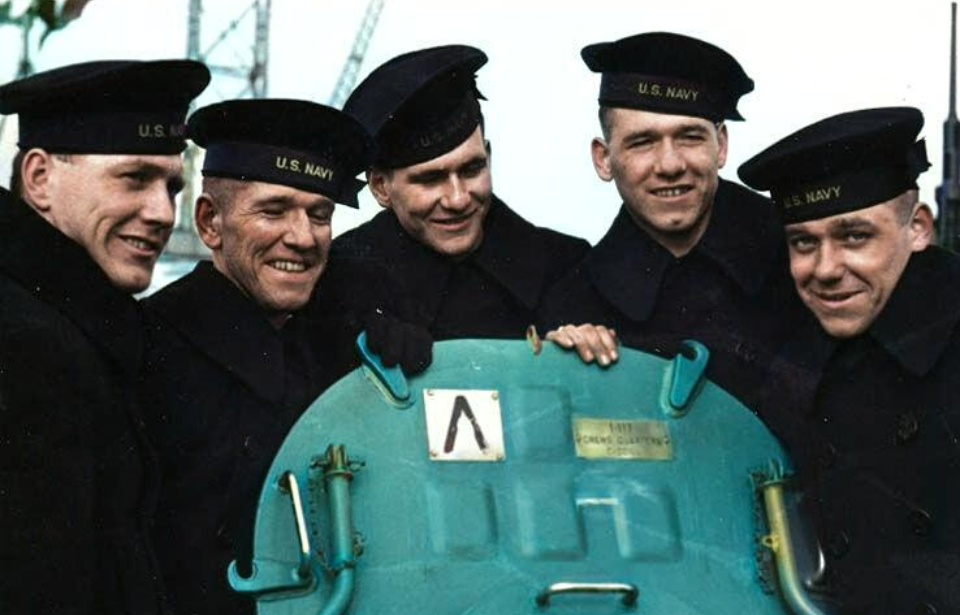For any family, losing a sibling, child, or relative during wartime is profoundly heartbreaking. For Thomas and Alleta Sullivan, their world was turned upside down when all five of their sons perished on the same day aboard the same ship—the greatest loss any single family has suffered in wartime history. The deaths of the Sullivan brothers shook the United States deeply and hugely impacted how family members were assigned during World War II.
The Sullivan brothers’ early life
The Sullivan brothers lived an average middle-class life in Waterloo, Iowa, as their parents, Thomas and Alleta Sullivan, were fortunate to have paying jobs during the Great Depression. The eldest brother, George, was born in December 1914. Next was Francis, born in 1916, followed by Joseph (1918), Madison (1919) and Albert (1922).
They also had one sister, Genevieve.
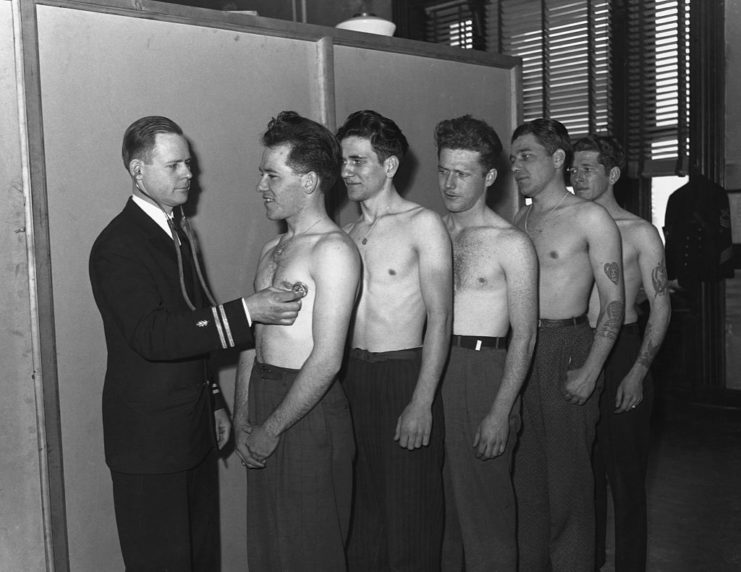
The brothers were incredibly close, working together at the Rath Packing Plant and spending evenings playing sports at the vacant lot next to their home. Family and religion were their main guiding principles, and “we stick together” was their motto.
Prior to America’s entry into the Second World War, George and Francis had both served in the US Navy, with the former being discharged as a Gunner’s Mate Third Class and the latter being a Seaman First Class. When word came that one of their friends had perished in the sinking of the USS Arizona (BB-39) during the Japanese attack on Pearl Harbor, all five decided to enlist, but with one condition: they be kept together. The Navy agreed, despite a policy in place that kept siblings apart.
Less than a month later, the Sullivan brothers were sworn in and left for basic training.
Service in the Pacific Theater

After serving in the Atlantic, the light cruiser USS Juneau (CL-52) was deployed to the Pacific in August 1942. The Sullivan brothers were assigned to the vessel and participated in a number of naval engagements throughout the Guadalcanal Campaign. This included the Battle of the Santa Cruz Islands that October.
That November, Juneau was tasked bringing reinforcements and supplies to the Solomon Islands during the Naval Battle of Guadalcanal. At the same time, the Japanese had sent a resupply ship to the other side of the island.
On November 12, the American ships, including Juneau, destroyed enemy aircraft attacking from above. During the melee, which continued into the night, the cruiser was struck by a torpedo launched from the Japanese destroyer Amatsukaze (1939). At dawn, the vessels traveled back to base. Juneau was forced to retire, due to the damage she’d suffered.
689 men died in the incident
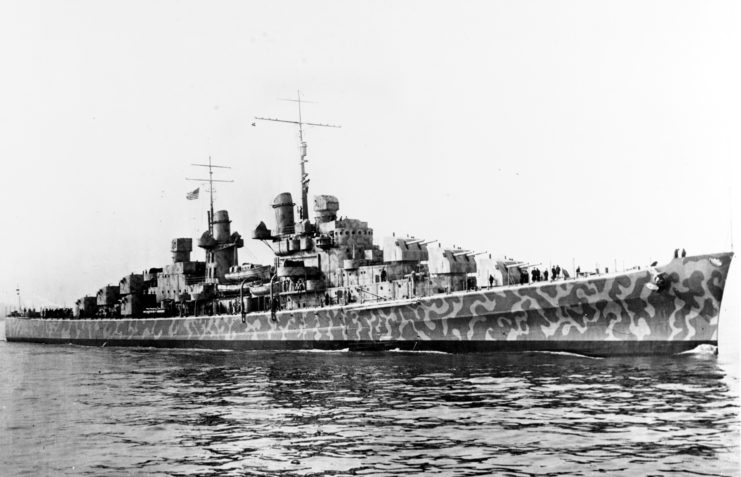
The cruiser’s damage made her an easy target for the Imperial Japanese Navy vessels, allowing the submarine I-26 to launch a torpedo at her ammunition supply area. This caused an explosion, which sunk Juneau in just 42 seconds.
Capt. Gilbert C. Hoover, commander of the American task force, described what he saw as Juneau was struck, “When the torpedo hit, there was a large single explosion and the air was filled with debris, much of it in large pieces… The whole ship disappeared in a large cloud of black, yellow black, and brown smoke. Debris showered down among ships of the formation for several minutes after the explosion to such an extent as to indicate erroneously a high-level bombing attack.”
Six-hundred and eighty-seven men died in the sinking and the events that followed, including all five Sullivan brothers. Between 100-140 crew members survived the initial blast and were left in the water, but several logistical errors meant the search for them was delayed for days. While they waited to be rescued, the survivors were subjected to hunger, thirst and shark attacks.
Eight days after the sinking, only 10 crewmen were rescued by a PBY Catalina.
What happened to the Sullivan brothers?
The survivors described the heart-wrenching final moments of the Sullivan brothers. Frank, Joe and Matt were killed instantly in the explosion, while Al drowned the following day.
George, the eldest, survived for several days before becoming delirious from Hypernatremia – a high concentration of salt in the bloodstream caused by seawater. Others believe his overwhelming grief over the loss of his brothers drove him to madness. He ultimately left the raft he was on and slipped into the water, never to be seen or heard from again.
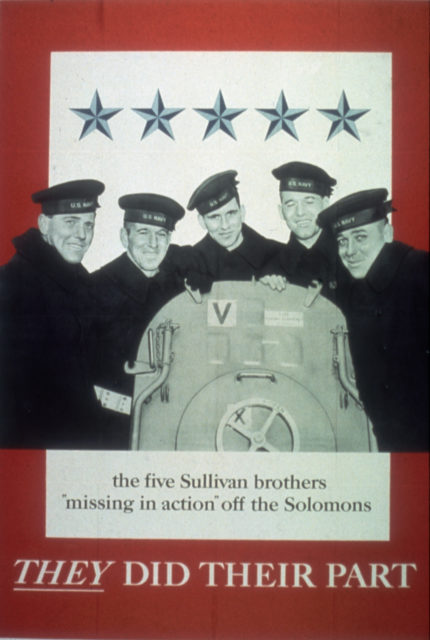
The loss of Juneau was kept a secret for security purposes, but once letters stopped arriving from the boys, Tom and Alleta grew worried. Aletta wrote to the Bureau of Naval Personnel in January 1943, mentioning a rumor she’d overheard that all five of her sons had been killed in action.
Her letter was answered by none other than President Franklin D. Roosevelt, who explained the brothers were missing in action. However, his response came one day after three men in uniform – a doctor, a lieutenant commander and a chief petty officer – arrived at the Sullivan home. “I have some news for you about your boys,” said one of them to Tom. “Which one?” He asked.
“I’m sorry,” the officer replied. “All five.”
The Sullivan brothers’ legacy
News of the tragic loss of the Sullivan brothers garnered worldwide attention. Pope Pius XII sent a silver religious medal and rosary with a touching letter of condolence, and President Roosevelt declared the next ship built would be named in their honor.
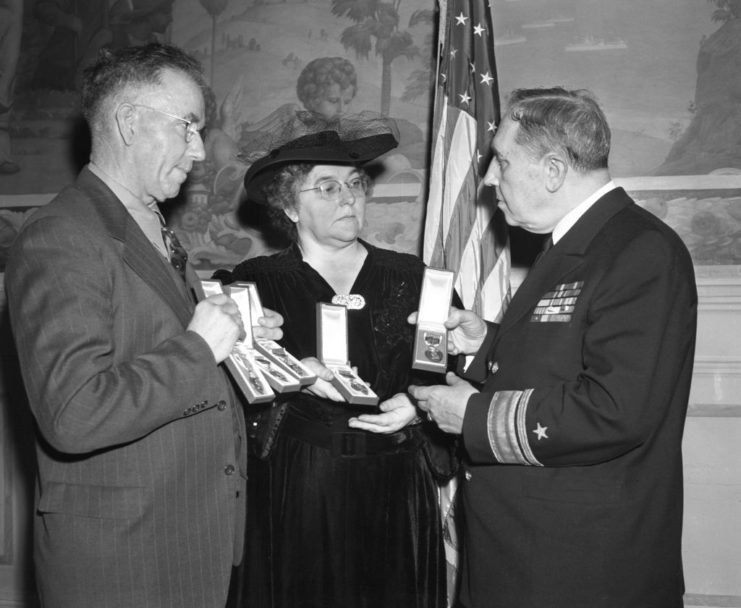
Two destroyers were ultimately named The Sullivans: USS The Sullivans (DD-537), the first US Navy ship to be named after more than one person, and USS The Sullivans (DDG-68). The motto for both was “we stick together.” Additionally, “the Fighting Sullivan Brothers” became a symbol of sacrifice and service for American war posters.
Their sister, Genevieve, honored her brothers by enlisting in the US Naval Reserve as a Specialist (Recruiter) Third Class. Along with her parents, she visited hundreds of manufacturing plants and shipyards during the war to encourage employees to produce more weapons to speed along the end of the conflict.
The Sole Survivor Policy
The death of the five brothers, as well as the four Borgstrom brothers over the course of just a few months, helped inform 1948’s Sole Survivor Policy. This allowed for the exemption of a sole surviving son from the draft if they’d already lost a family member to military service.
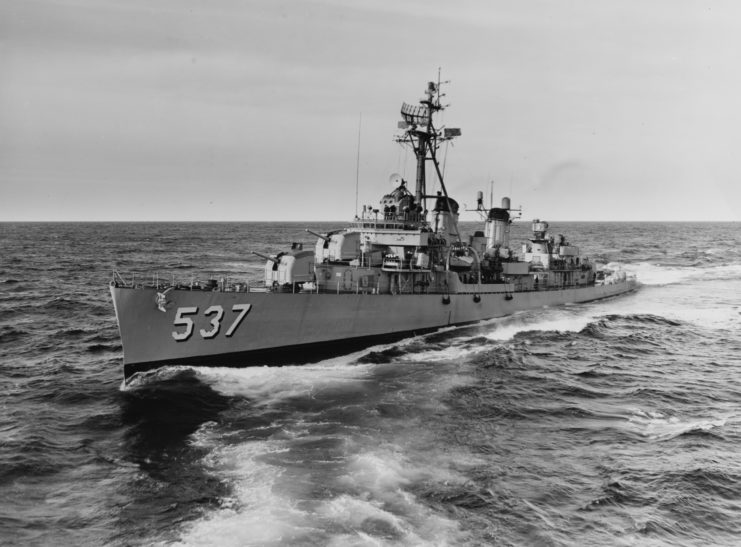
Are you a fan of all things ships and submarines? If so, subscribe to our Daily Warships newsletter!
In 2018, the final resting place of the Sullivan brothers was unearthed when the USS Juneau was discovered by Vulcan Inc., an ocean exploration company owned by Microsoft co-founder Paul Allen. The wreck was found on St. Patrick’s Day – a strange coincidence relating to the brother’s Irish heritage. Their bodies were never recovered, but the five are memorialized at the Manila American Cemetery in the Philippines.
Inseparable in life, the five Sullivan brothers are also together in death.
